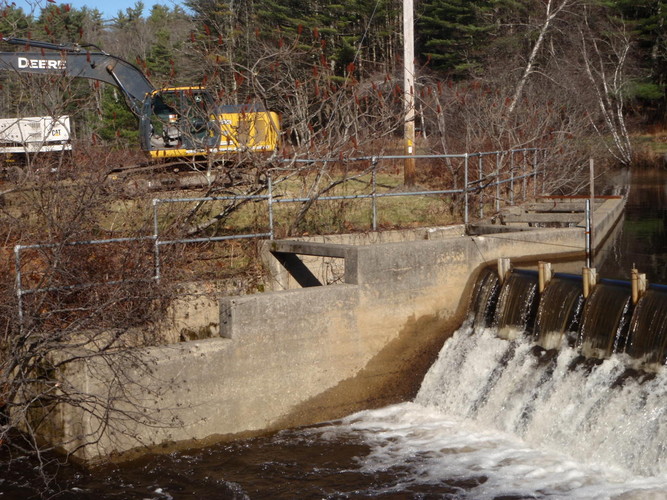The Wrack
The Wrack is the Wells Reserve blog, our collective logbook on the web.
The Wrack is the Wells Reserve blog, our collective logbook on the web.
The following was published in the Biddeford-Saco Journal Tribune Sunday edition, 11/3/13:

Jake Aman, a researcher at the Wells Reserve at Laudholm known fondly as our “river guy,” is building a ladder this month. At a cost of $40,000, provided by funders including the Nature Conservancy, the US Fish & Wildlife Service, the Maine Coastal Program, the local water district and the Reserve, it’s not some ordinary stepladder. It’s fancy.
None of us will be climbing Jake’s ladder anytime soon, though. It’s a ladder for fish. With it, they’ll be able to climb up and over a small but insurmountable dam on the Branch Brook, a tributary of the Little River here on the Kennebunk/Wells border. With this ladder, the Wells Reserve will reestablish an essential connection between the ocean downstream and vital nursery pools upstream. A small piece, missing for twenty years from a mosaic that stretches from New Hampshire to Newfoundland, will be replaced.
Hundreds of Maine’s rivers, large and small, were dammed over the past three centuries. These dams severed the connections between spawning habitat and open range for a wide variety of fish in the Gulf of Maine. These fish – among them alewives, river herring, smelt, and salmon – suffered because of our actions. And because nature is an intricate web of interconnections built up over thousands and millions of years, the effects weren’t limited to just some small fry. Evidence is accumulating that the drop in our cod populations coincided with, among other things, the closing off of the very rivers that cod food use for spawning.
That’s just one link. In Alaska, brown bears sit in rivers each spring to catch spawning salmon. The bears (and eagles, and wolves, and others) eat their fill, leaving the carcasses to rot under trees on the riverbanks. The decomposing salmon give up the nitrogen in their bodies to the trees. The forest grows over the streams, providing shady pools and insect habitat the salmon need. Can anyone say that similar relationships don’t exist here in Maine, or that they could if we let nature resume its [water] course? The short-sighted opportunism of a few hundred years of river damming may be an idea whose time has passed. Jacob’s ladder, coming this November to a small stream in Wells, is a bridge to the future.
I am neither a fish scientist nor a fisherman. I just enjoy exploring nature, animal and human. Because it’s election time this week as well, thinking about fish that move between saltwater and fresh naturally leads me to think of another courageous but rare species: legislators that cross party lines for the benefit of our state or nation. Once more prevalent, their numbers seem to dwindle with each new generation. With a bruising shutdown still fading, and continued dysfunction in Washington, you don’t have to be a scientist, river or political, to see the ill effects on our economic ecosystem when our representatives stop swimming between worlds. Does anyone have a ladder for them?
Nik Charov is president of Laudholm Trust, the nonprofit partner of the Wells National Estuarine Research Reserve in Wells, Maine. His Sunday Journal Tribune column, “Between Two Worlds,” ventures forth from the intersection of art and science, past and future, salt and fresh. More at wellsreserve.org/twoworlds.